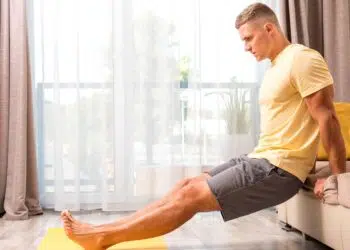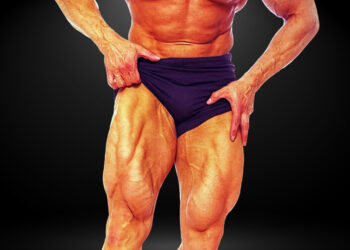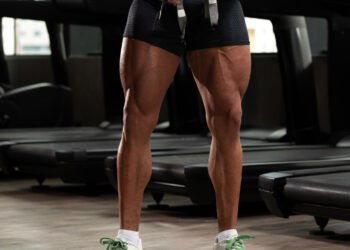Barbell squats, deadlifts, leg extensions, and leg presses share one limitation: they require expensive gym equipment. As a fitness expert with Royal Marine Commandos experience and years training athletes, I’ve proven that powerful quads, hamstrings, and glutes develop effectively through strategic bodyweight training.
These five comprehensive workouts deliver measurable strength gains, muscle definition, and functional power – all from your living room. Each routine targets different training adaptations while maximizing lower body development through progressive overload principles.
Workout #1: High-Intensity Tabata Power Circuit
Tabata protocols utilize 20-second work intervals followed by 10-second recovery periods, repeated eight times for four-minute blocks. This scientifically-proven method triggers both strength adaptations and cardiovascular improvements while maximizing training efficiency.
Complete this explosive lower body circuit in under 20 minutes for maximum muscle activation and metabolic conditioning.
Protocol: Eight rounds of 20 seconds work, 10 seconds rest for each exercise
Explosive Jump Squats
Jump squats activate every lower body muscle fiber while developing explosive power and cardiovascular endurance. This plyometric movement builds functional strength that transfers to athletic performance and daily activities.
Level Up Your Fitness: Join our 💪 strong community in Fitness Volt Newsletter. Get daily inspiration, expert-backed workouts, nutrition tips, the latest in strength sports, and the support you need to reach your goals. Subscribe for free!
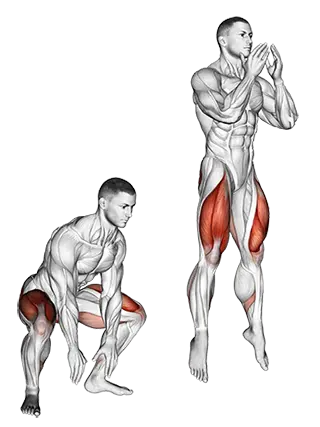
Execution Technique:
- Position feet shoulder-width apart with toes slightly outward
- Descend into deep squat position, loading glutes and hamstrings
- Drive through heels explosively, extending hips and knees simultaneously
- Swing arms upward for maximum vertical displacement
- Land softly on forefoot, immediately transitioning into next repetition
Reverse Lunge Power Steps
Reverse lunges target glutes and hamstrings while correcting muscle imbalances between legs. This unilateral movement pattern enhances stability, coordination, and functional strength for real-world activities.
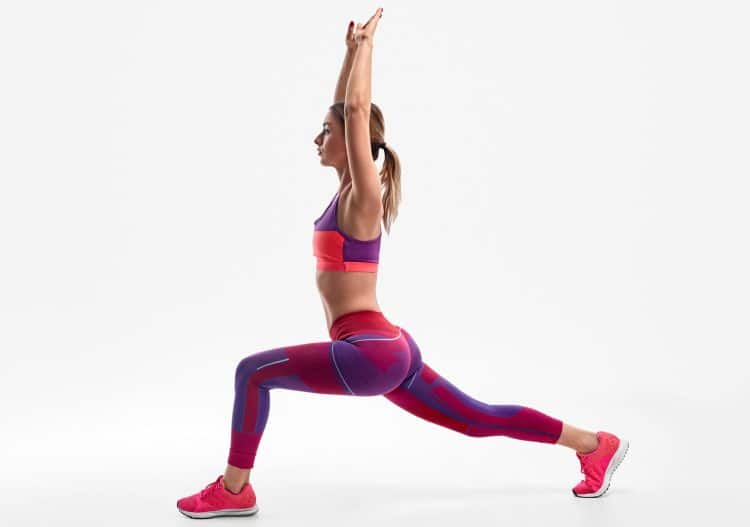
Execution Technique:
- Stand tall with feet hip-width apart, core engaged
- Step backward into wide stance, maintaining upright torso
- Lower rear knee toward floor while keeping front shin vertical
- Push through front heel to return to starting position
- Alternate legs continuously for balanced development
Bodyweight Quad Extensions
This bodyweight variation mimics leg extension machines while building exceptional quadriceps strength and knee stability. The exercise challenges muscle endurance and control through extended time under tension.
Execution Technique:
- Kneel upright with thighs perpendicular to floor
- Cross arms over chest for stability
- Lean backward slowly, maintaining straight line from knees to head
- Contract quadriceps forcefully to return to vertical position
- Control both eccentric and concentric phases
Glute-Focused Hip Thrusts
Hip thrusts specifically target glutes and posterior chain muscles while improving hip extension power. This movement corrects sitting-related muscle weakness and enhances athletic performance.
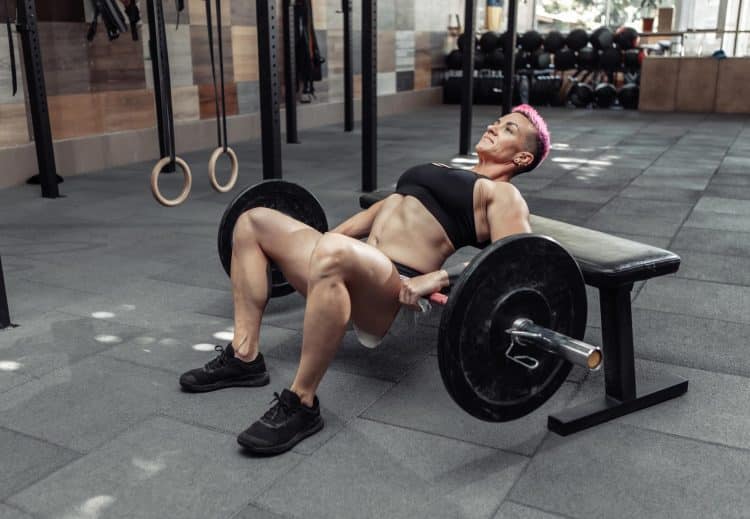
Execution Technique:
- Lie supine with knees bent, feet flat on floor
- Position heels 6-12 inches from glutes
- Drive hips upward, creating straight line from knees to shoulders
- Squeeze glutes at top position for maximum activation
- Lower controlled, maintaining tension throughout range
Workout #2: Unilateral Strength Challenge
Single-limb exercises dramatically increase training intensity by forcing each leg to handle full bodyweight independently. This approach identifies strength imbalances while developing superior stability and coordination.
Protocol: Complete 4 sets of 6-12 repetitions per leg
Single-Leg Box Squats
Box squats eliminate the intimidation factor of full pistol squats while providing consistent depth targets. This progression builds toward advanced single-leg movements while ensuring proper form development.
Execution Technique:
- Stand facing away from knee-high box or chair
- Balance on one leg, extending opposite leg forward
- Lower until glutes lightly contact box surface
- Drive through heel to return to standing position
- Complete all reps before switching legs
Single-Leg Romanian Deadlifts
This movement develops posterior chain strength while challenging balance and proprioception. Romanian deadlifts teach proper hip hinge mechanics essential for injury prevention and athletic performance.
Execution Technique:
- Stand on one leg with slight knee bend
- Hinge forward from hips while extending free leg backward
- Reach toward floor while maintaining straight back
- Return to upright position through hip extension
- Feel deep stretch in hamstring and glute
Bulgarian Split Squats
Bulgarian split squats emphasize front leg loading while improving hip mobility and single-leg strength. This exercise bridges the gap between bilateral and unilateral training progressions.
Execution Technique:
- Position rear foot on elevated surface behind you
- Step forward into split stance position
- Lower until front thigh reaches parallel position
- Drive through front heel to return upward
- Maintain upright torso throughout movement
Dynamic Step-Through Lunges
Step-through lunges combine forward and reverse lunge patterns for comprehensive leg development. This dynamic movement challenges coordination while building functional strength patterns.
Execution Technique:
- Begin in standing position with feet together
- Step backward into reverse lunge position
- Step forward through center into forward lunge
- Return to center and repeat sequence
- Complete all reps on one leg before switching
Single-Leg Calf Raises
Unilateral calf raises develop lower leg strength and stability essential for athletic performance. This exercise targets often-neglected muscles while improving ankle mobility and function.
Execution Technique:
- Stand on ball of foot at edge of step
- Allow heel to drop below step level for full stretch
- Rise onto tiptoes through calf contraction
- Control both raising and lowering phases
- Use wall for balance if needed
Workout #3: Triple-Threat Squat Intensity
This time-efficient workout maximizes training impact through tri-set protocols. Moving quickly between exercises creates metabolic stress while building muscular endurance and power.
Protocol: Complete 3 tri-sets with minimal rest between exercises
Level Up Your Fitness: Join our 💪 strong community in Fitness Volt Newsletter. Get daily inspiration, expert-backed workouts, nutrition tips, the latest in strength sports, and the support you need to reach your goals. Subscribe for free!
Paused Box Jump Squats
Paused variations eliminate stretch-shortening cycle assistance, requiring pure concentric power production. Box targets ensure consistent jump height while preventing shortened range of motion.
Execution Technique:
- Stand two feet from knee-high box
- Descend into deep squat, pausing for two seconds
- Explode upward and forward onto box
- Land softly with bent knees
- Step down and reset for next repetition
Single-Leg Emphasis Squats
Kickstarter squats shift weight distribution to challenge one leg more than the other. This variation adds unilateral training benefits while maintaining bilateral movement patterns.
Execution Technique:
- Stand with feet shoulder-width apart
- Lift one heel, shifting weight to opposite leg
- Perform squat with majority of load on planted leg
- Return to starting position and switch sides
- Alternate weight shifts each repetition
Isometric Wall Squats
Wall squats build muscular endurance through sustained contractions. This isometric exercise creates intense muscle activation while teaching proper squat positioning and alignment.
Execution Technique:
- Position back against smooth wall surface
- Walk feet forward approximately two feet
- Slide down until thighs parallel floor
- Press back firmly against wall
- Hold position for maximum time possible
Workout #4: Metabolic Walking Lunge Challenge
This outdoor-friendly workout combines strength training with cardiovascular conditioning. The descending ladder format maintains high intensity while accommodating fatigue accumulation.
Complete the following sequence:
- 50 walking lunges (25 per leg) + 50 prisoner squats
- Return to start position via walk/jog/run
- 40 walking lunges (20 per leg) + 40 prisoner squats
- Return to start position via walk/jog/run
- 30 walking lunges (15 per leg) + 30 prisoner squats
- Return to start position via walk/jog/run
- 20 walking lunges (10 per leg) + 20 prisoner squats
- Return to start position via walk/jog/run
- 10 walking lunges (5 per leg) + 10 prisoner squats
- Final return to start position
Walking Lunges
Walking lunges develop functional strength through multi-planar movement patterns. This exercise builds leg muscle while improving coordination, balance, and mobility.
Execution Technique:
- Step forward into wide lunge stance
- Lower rear knee toward ground
- Drive through front heel to step forward
- Continue alternating legs with each step
- Maintain upright posture throughout
Prisoner Squats
Hand positioning behind the head prevents forward lean while increasing core activation. This variation intensifies bodyweight squats by eliminating arm assistance and challenging postural control.
Execution Technique:
- Clasp hands behind head with elbows wide
- Maintain open chest position throughout
- Descend until thighs parallel to floor
- Drive through heels to return upward
- Keep spine neutral and core engaged
Active Recovery Movement
Choose walking, jogging, running, or sprinting based on current fitness level and fatigue state. This active recovery maintains elevated heart rate while allowing partial muscle recovery.
Workout #5: Time-Based Density Training
Density training eliminates rigid rep schemes, allowing individual pacing while maximizing work capacity. This approach accommodates different fitness levels while providing objective progress measurements.
Protocol: Complete each exercise for 5 minutes, resting 1-2 minutes between blocks
Wide-Stance Sumo Squats
Sumo squats target adductors and glutes through altered foot positioning. This variation addresses often-neglected inner thigh muscles while providing fresh stimulus for strength development.
Execution Technique:
- Position feet 1.5x shoulder-width apart
- Turn toes outward approximately 45 degrees
- Descend by pushing hips back and knees out
- Lower until thighs parallel to floor
- Drive through heels to return upward
Prisoner Good Mornings
Good mornings teach proper hip hinge mechanics while strengthening posterior chain muscles. This movement improves hamstring flexibility and glute activation patterns essential for athletic performance.
Execution Technique:
- Place hands behind head with chest open
- Stand with feet hip-width apart
- Hinge forward from hips while pushing butt back
- Lower torso until feeling hamstring stretch
- Return to upright position through hip drive
Continuous Alternating Lunges
Stay-low lunges eliminate rest periods between repetitions, creating intense quad activation and metabolic stress. This variation maximizes time under tension while building muscular endurance.
Execution Technique:
- Begin in deep squat position
- Step one foot forward into lunge stance
- Return to squat without standing upright
- Immediately lunge with opposite leg
- Continue alternating while staying low
Towel Hamstring Curls
Heel slide curls simulate leg curl machines using simple equipment. This exercise specifically targets hamstrings while improving hip stability and glute activation patterns.
Execution Technique:
- Lie supine with legs straight, towel under heels
- Simultaneously lift hips and bend knees
- Slide heels toward glutes through hamstring contraction
- Extend legs while maintaining hip elevation
- Lower hips to complete one repetition
Frequently Asked Questions
How do I make bodyweight leg exercises more demanding?
There are several ways you can make bodyweight leg exercises more challenging. Options include:
- Use a slower tempo – this increases your time under tension, which is how long your set takes to complete. For example, lower yourself down in three seconds and rise back up in three seconds. This is considerably slower than the usual 1:1 tempo that most exercisers automatically gravitate towards.
- Do more reps per set – we’ve provided rep counts for all the workouts in this article, but they are only guidelines. If you want a tougher workout, feel free to do more reps.
- Do more sets per workout – you don’t have to follow these workouts exactly. Make them more challenging by doing more sets of each exercise.
- Take shorter rests – taking shorter rests between sets will make the next one feel much harder because you won’t be as recovered. Try resting just 30-45 seconds between sets instead of the more usual 60-90 seconds.
- Wear a backpack or weighted vest – temporarily increase your bodyweight by wearing a backpack or weighted vest. Start with about 10% of your body weight and increase from there.
How many times a week should I train my legs?
Most exercisers should train their legs once or twice a week. Because these workouts are quite short, you may even be able to work your lower body three times a week. If you have plenty of energy, why not work your legs more often?
But, if you are still tired from your last workout, an extra rest day may be more beneficial than training. Also, if you are happy with your leg development, you won’t need to train your lower body so often to maintain it. If you want to improve your legs, more frequent workouts may be more appropriate.
Are these leg workouts also a form of cardio?
Yes, some of them are. Your legs are made up of several large muscles, and they demand a lot of oxygen when you are training them. Because of this, you may notice your heart and breathing rate increase significantly despite not doing any traditional cardio exercises. This is entirely normal and nothing to worry about. Instead, enjoy the fact that you are getting two workouts for the price of one – for your legs and cardio.
What sort of warm-up should I do before a bodyweight leg work out?
Start with a few minutes of light cardio, such as jogging or jumping rope. Then, when you feel warmer and slightly out of breath, do some easy dynamic stretches and mobility exercises for the muscles you are about to work. Finally, do 1-2 sets of the exercises in your workout. Just do a few reps to practice and familiarize yourself with the movements. You should now be ready to go!
Some of these exercises make my knees ache. Is that normal?
While it’s normal for your muscles to hurt during your workout, your joints should not. If you are experiencing joint pain, such as in your hips or knees, make sure you are doing the exercises correctly.
You may also find that you have less joint pain if you warm up for longer. If you still have joint pain, consider doing fewer reps per set, and avoiding any high impact exercises, such as box jumps and squat jumps. If the pain persists, you should speak to your doctor.
Build Stronger Legs Starting Today
Effective leg training transcends gym equipment limitations. These five comprehensive workouts prove that bodyweight exercises deliver measurable strength gains, muscle development, and functional improvements.
Success requires consistency, progressive overload, and proper form execution. Higher repetition ranges and unilateral training variations compensate for limited external load while providing unique training benefits unavailable in traditional gym settings.
Start with one workout, master the movement patterns, then progress through increasingly challenging variations. Your legs will respond with improved strength, power, and definition – no gym membership required.





